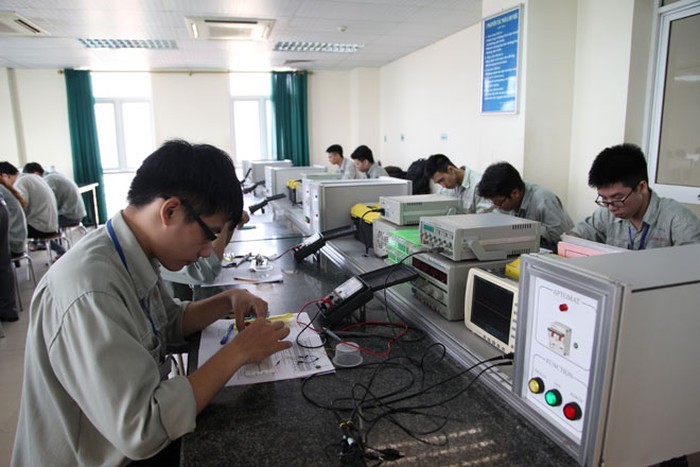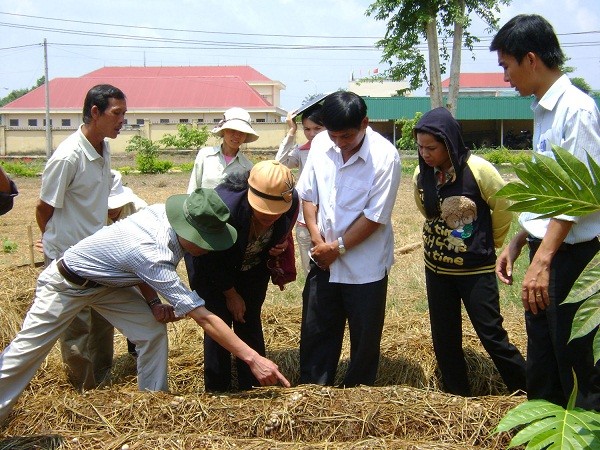(VOVWORLD) - Vietnam trains 22 occupations to international standards at 45 vocational colleges nationwide under its technical vocational education and training (TVET) reform plan which began last year.

A total of 1,056 students are being trained at 45 vocational colleges nationwide. (Photo: hanoimoi)
|
The occupations include mechanical system maintenance, seafood processing and preservation, machine manufacturing, vessel shell manufacturing, ocean liner operations, hotel management, and cooking.
Last year Vietnamese vocational colleges used 22 curricula acquired from Germany. 12 curricula from Australia and 22 more from Germany will be added this year to ensure that personnel trained in Vietnam can compete with workers in ASEAN and elsewhere.
Minister of Education and Training Phung Xuan Nha said the Ministry has designed a training project that combines theoretical and practical training and coordinates with other agencies to promote standardization.
The project calls for greater business involvement in the training process to ensure a tight link between vocational schools and the businesses who will eventually employ their students, according to Mr. Nha.
“We’ll work with agencies, training facilities, associations, and businesses to promote standardization and avoid working at cross purposes,” he said.
The General Directorate of Vocational Training has implemented a Prime Minister-approved project to transfer curricula, train vocational teachers and managerial staff, and pilot occupational training programs.
|
 Improving occupational skills for rural laborers is an emergency task for Vietnam. Improving occupational skills for rural laborers is an emergency task for Vietnam.
(Photo: baodansinh.vn)
|
More than 67% of Vietnam’s workers are involved in the agricultural sector, but the number of new jobs created for rural workers grows 4-5% a year.
Dao Van Tien, Director of the Department of Continuing Training of the General Directorate of Vocational Training, said, “The training must be closely tied to real farming and animal husbandry, and should be conducted at actual production facilities.”
The Ministry of Agriculture and Rural Development and the Ministry of Labor, Invalids and Social Affairs have jointly developed an agricultural vocational training program until 2030 with top priority given to agricultural startups, and high-tech agriculture.
Tran Thanh Nam, Deputy Minister of Agriculture and Rural Development, said, “We want to gather opinions from scientists and international organizations to outline a post-2020 training program that takes into account trade agreements that require high product quality and agricultural sector restructuring to improve farm produce.”
It is forecast that 6 million workers will need agricultural training by 2030. Increased vocational training will improve farm produce quality, boost rural incomes, and reduce the unemployment rate among young workers.
According to the General Directorate of Vocational Training, the transfer of curricula entails the import of textbooks and other training materials, and the adoption of testing methods, assessment criteria, and international qualification standards. The transfer must ensure the core content of the original materials but adapt them to the Vietnamese labor environment, it said.